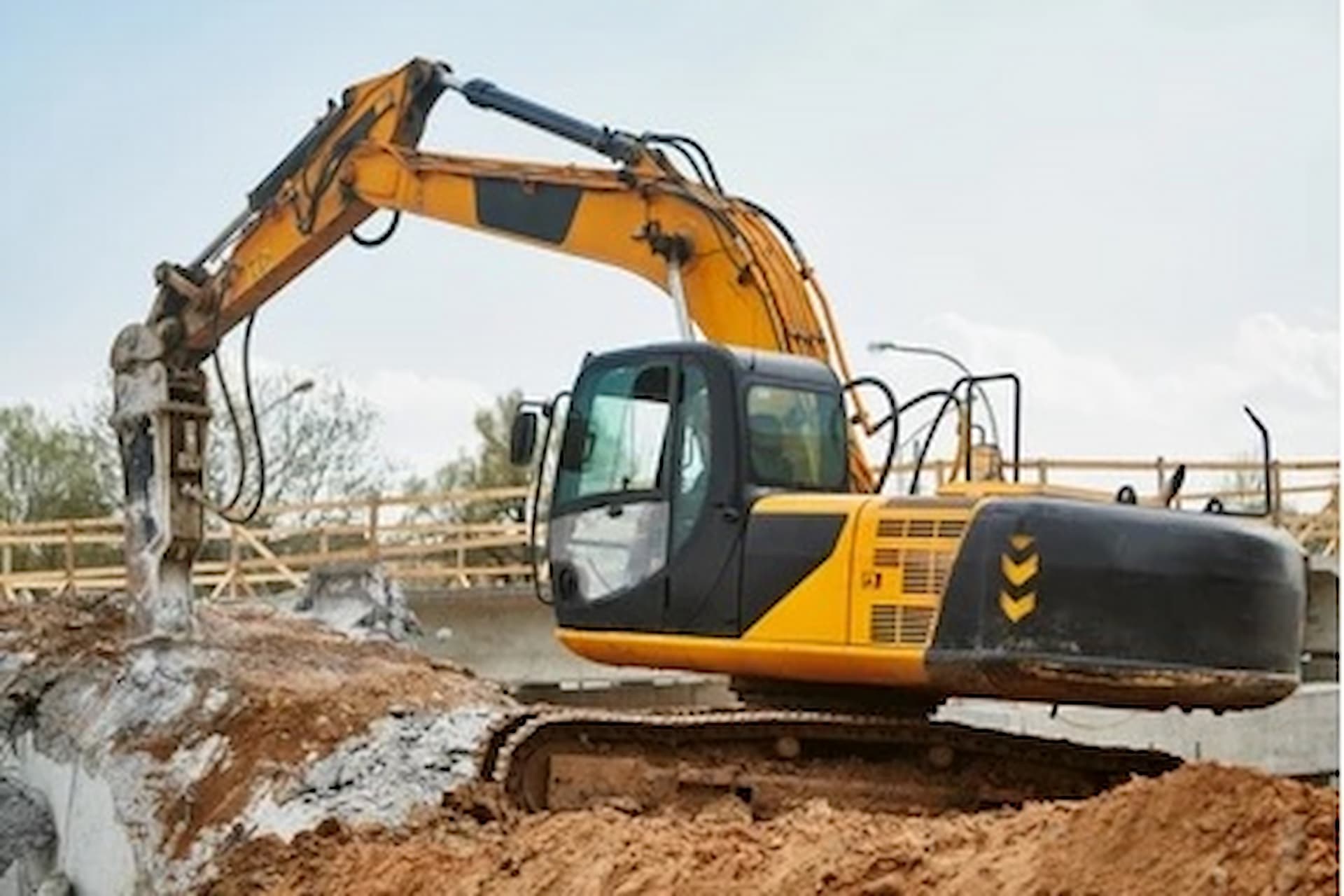Hydraulic breakers have revolutionised the construction and demolition industries, providing a powerful and efficient means of breaking through hard materials such as rock and concrete. These tools have evolved significantly since their inception, driven by technological advancements and the ever-growing demands of modern construction projects. This blog post delves into the history of hydraulic breakers, tracing their development from early prototypes to the sophisticated machines used today, and explores the key innovations that have shaped their evolution.
The Dawn of Hydraulic Breakers
Early Inventions and Innovations
The concept of hydraulic breakers can be traced back to the early 20th century when the construction industry sought more efficient methods for breaking rocks and concrete. Before the advent of hydraulic technology, pneumatic breakers were the primary tools used for such tasks. Powered by compressed air, these early tools were cumbersome and required significant physical effort from operators.
The breakthrough came with the introduction of hydraulic technology. These breakers were first developed in the mid-20th century, leveraging hydraulic fluid to generate powerful impacts. These early models were rudimentary but marked a significant improvement over pneumatic breakers. The hydraulic fluid, typically oil, was pressurised to drive a piston, delivering a forceful blow to the broken material.
The Transition to Hydraulic Power
The transition from pneumatic to these breakers was gradual, driven by the need for more efficient and powerful tools. These breakers offered several advantages over their pneumatic counterparts, including greater impact force, improved efficiency, and reduced operator fatigue. This transition was facilitated by advancements in hydraulic systems and materials, which allowed for the developing of more reliable and durable breakers.
The late 20th century saw significant improvements in hydraulic breaker design by introducing more sophisticated hydraulic systems and better materials. These advancements led to the production of more powerful, efficient, and easier-to-maintain breakers.
Key Technological Advancements
Enhanced Hydraulic Systems
One of the most significant advancements in hydraulic breaker technology has been the development of enhanced hydraulic systems. Modern breakers utilise advanced hydraulic circuits that optimise the flow of hydraulic fluid, resulting in more efficient energy transfer and greater impact force. These systems are designed to minimise energy losses and ensure consistent performance, even under demanding conditions.
The introduction of variable energy control systems has further improved the performance of these breakers. These systems allow operators to adjust the impact energy of the breaker, enabling them to tailor the tool’s performance to the specific requirements of the task at hand. This capability not only enhances efficiency but also extends the lifespan of the breaker by reducing unnecessary wear and tear.
Improved Materials and Manufacturing Techniques
The evolution of these breakers has been closely tied to advancements in materials science and manufacturing techniques. Early on, these breakers were often plagued by issues related to wear and durability, as the materials used in their construction could not withstand the high stresses and impacts involved in breaking hard materials.
Modern breakers are constructed from high-strength alloys and composites that offer superior durability and resistance to wear. These materials can withstand the extreme forces generated by these breakers, ensuring reliable performance and extended service life. Additionally, advanced manufacturing techniques, such as precision machining and heat treatment, have improved the quality and consistency of hydraulic breaker components, further enhancing their performance and reliability.
The Impact of Digital Technology
Integration of Smart Technologies
The integration of digital technologies has transformed the hydraulic breaker industry, leading to the development of intelligent breakers that offer unprecedented control and efficiency. These smart breakers have sensors and electronic control systems that monitor and adjust the tool’s real-time performance. This capability allows operators to optimise the breaker’s performance for different materials and conditions, improving efficiency and reducing the risk of damage to the tool or the broken material.
Smart breakers also offer advanced diagnostic and maintenance features, allowing operators to monitor the breaker’s health and performance and schedule maintenance as needed. This proactive maintenance approach helps minimise downtime and extend the breaker’s lifespan, resulting in significant operator cost savings.
Automation and Remote Operation
The rise of automation and remote operation technologies has further enhanced these breakers’ capabilities. Modern hydraulic breakers can be integrated with automated systems and controlled remotely, allowing operators to perform breaking tasks with greater precision and safety. This capability is precious in hazardous environments where direct human operation may pose significant risks.
Remote operation systems utilise advanced communication technologies, such as wireless networks and satellite links, to transmit control signals and receive feedback from the breaker. It allows operators to monitor and control the breaker from a safe distance, ensuring optimal performance and safety.
Conclusion
The evolution of hydraulic breakers from their early inception to today’s modern innovations is a testament to the relentless pursuit of efficiency, durability, and performance in the construction industry. From the initial transition from pneumatic to hydraulic power, through the development of enhanced hydraulic systems and materials, to the integration of digital technologies and the focus on sustainability, these breakers have undergone a remarkable transformation.
